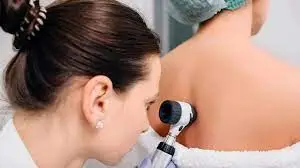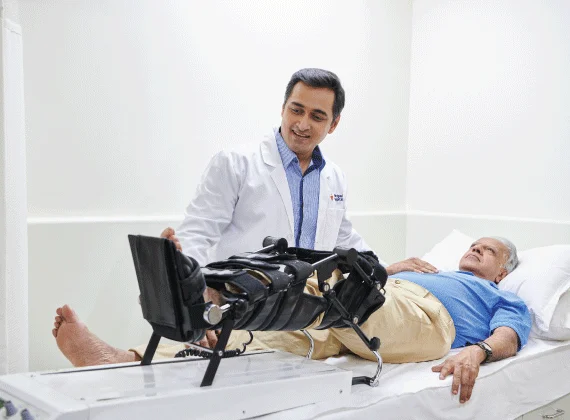Dermatologist
What is a Dermatologist?
A board-certified dermatologist understands your skin, hair, and nails better than anyone else. A dermatologist is a physician with a focus on conditions affecting the skin, hair, and nails. It’s rashes, wrinkles, psoriasis, or melanoma.
The skin is an amazing organ. It acts as your first line of defense against disease, protects your other organs, heats and cools you, and sends signals about your internal health. Dermatologists are highly trained medical doctors and skin surgeons who have the knowledge and skills to provide the best possible care for the organ that looks after you.
What exactly does a Dermatologist do?
A board-certified dermatologist has significant training, allowing them to reliably diagnose and treat over 3,000 skin, hair, and nail illnesses, as well as cosmetic concerns.
If you went to see a dermatologist at work on any given day, you may notice:
- Treat a prominent birthmark on a baby that is threatening the child’s vision.
- Remove a mother’s fatal melanoma while it is still in its early, treatable stage.
- Assist a student whose chronic eczema makes sleeping difficult.
- Determine the life-threatening liver disease that is causing painful itching in a grandfather.
- Treat a young woman’s hair loss to give her the confidence to look for work.
- Your dermatologist understands the distinction between minor and significant issues.
- Dermatologists realize that skin conditions can have major consequences for your health and well-being.
- A skin disorder may be the first indicator of a major underlying health problem, and your dermatologist may be the first to recognize it.
- Diabetes and heart disease, for example, might manifest itself on the skin.
- Your dermatologist understands that a skin disease does not have to be life-threatening to have an impact on a person’s quality of life.
- A skin disease can lead to sleep loss, poor self-image, major depression, and decreased productivity.
- Eczema (also known as atopic dermatitis), scarring hair loss, and psoriasis are all disorders that can cause this.
What exactly is Dermatology?
Dermatology is a branch of medicine that focuses on problems with the skin, hair, nails, and mucous membranes.
The largest organ in the body is the skin. It can be an indicator of general health as well as the first line of defense against pathogens and injury.
What kind of education does a Dermatologist have?
When it comes to diagnosing and treating skin, hair, and nail issues, no one has more training than a board-certified dermatologist. Before they can practice, dermatologists must finish more than a decade of training.
- A bachelor’s degree is earned after four years of college.
- To become a doctor, you must first attend medical school for four years.
- A one-year medical internship
- Three years of dermatology residency, working alongside experienced doctors and completing 12,000 to 16,000 hours of patient care.
What exactly is a Dermatologist who is board-certified?
To become board-certified in dermatology, you must first:
- Attending medical school and eventually becoming a doctor
- completing dermatology residency training successfully
- Passing the board exam, a difficult exam that assesses the dermatologist’s knowledge and skills gained during their years of training
- If the dermatologist passes the board exam, they will become board-certified.
What conditions do Dermatologists treat?
Dermatologists commonly treat the following conditions:
A dermatologist must have a wide range of clinical expertise, including the different internal health issues that might cause skin complaints.
Dermatologists can treat over 3,000 different conditions. Here are a few examples of those they encounter most frequently:
Acne: Acne is one of the most frequent skin diseases, with numerous reasons that can result in various types of pimples. Scarring, low self-esteem, and other issues impact some people.
Dermatitis and eczema: Dermatitis is an inflammation of the skin that causes swelling and an itchy rash. There are several types of eczema, the most common of which is atopic dermatitis.
Fungal infections: Fungal infections are prevalent and can affect the skin, nails, and hair. Candida yeasts can cause various fungal infections, such as oral thrush, ringworm, athlete’s foot, and balanitis.
Hair loss: In the United States, around 80 million people suffer from hereditary hair loss. Hair loss can be caused by a variety of health issues, including head lice, which affects 6-12 million children. It is aged 3-11 years in the United States every year.
Warts: Warts are infectious, benign skin growths that develop after a virus infects the top layer of skin. A dermatologist can eradicate persistent warts using a range of procedures.
Nail problems: Problems with the skin around and under the nails are also treated by dermatologists. Ingrown nails, fungal infections, and a range of other conditions can cause this damage.
Vitiligo: Vitiligo is a skin condition in which melanin, a pigment, is lost. As a result, some areas of skin are lighter than others.
Psoriasis: This chronic autoimmune illness causes skin cells to develop too quickly, resulting in thick, red, purple, or silvery and scaly areas of skin. Psoriasis is classified into numerous categories.
Rosacea: Rosacea is characterized by facial redness, sometimes with pus-filled pimples, visible blood vessels, and swelling of the eyelids. Symptoms might progress from the nose and cheeks to the chin, ears, chest, and back.
Shingles, or herpes zoster: Shingles, also known as herpes zoster, is a viral infection that causes a painful rash. It may clear up in a few weeks without therapy, but medical intervention may speed up recovery and prevent problems.
What procedures does a Dermatologist perform?
Dermatologists utilize a variety of medical and cosmetic procedures to treat skin, nail, and hair problems.
Many skin disorders can be treated with medications and noninvasive procedures, while others require more intrusive treatments. These treatments can be performed in either an outpatient setting, such as a doctor’s office, or in a hospital.
Chemical peels
This procedure uses a chemical solution that causes a layer of skin to peel away, revealing regenerated skin beneath that is usually smoother.
This method is used by dermatologists to treat sun-damaged skin and some types of acne. It can also help with cosmetic issues including age spots and wrinkles beneath the eyes.
Cosmetic injections
Injections can be used to temporarily treat wrinkles, scars, and diminished face fullness. During an office visit, a dermatologist can inject Botox or fillers like collagen and fat.
The effects usually last a few months, and they must be maintained with monthly injections. Some people, however, develop antibodies to Botox, rendering the injections ineffective.
Cryotherapy
Many benign skin disorders, such as warts, can be treated quickly using cryotherapy.
The method entails freezing skin lesions, frequently using liquid nitrogen, to eliminate the afflicted cells.
Dermabrasion
Dermabrasion can help eliminate scar tissue, small wrinkles, tattoos, and potentially precancerous skin regions.
A dermatologist removes the top layer of skin using a high-speed revolving brush.
Excision of lesions
Dermatologists remove skin lesions for a variety of reasons. They may remove these lesions:
- To keep a disease from spreading for cosmetic reasons to avoid recurrent infection to relieve symptoms
- To identify an underlying problem
- Depending on the size of the lesion, local or general anesthesia may be administered before to removal.
Hair removal versus hair restoration
A dermatologist can treat hair loss using a variety of techniques, including transplantation.
Lasers can also be used to eradicate undesirable body hair.
Dermatologists remove skin lesions for a variety of reasons. They may remove these lesions:
- To keep a disease from spreading for cosmetic reasons to avoid recurrent infection To relieve symptoms
- To identify an underlying problem
- Depending on the size of the lesion, local or general anesthesia may be administered before to removal.
Laser treatment
Dermatologists can also employ laser surgery to address a wide range of skin problems or cosmetic complaints, such as:
- Tumors,
- Warts,
- Moles,
- Undesirable tattoos,
- Birthmarks,
- Scars, and
- Wrinkles
Vein treatments
Superficial leg veins are dilated surface veins that are tiny in size. People may refer to them as spider veins and may beg that they be removed.
Sclerotherapy is the most often used spider vein treatment. It entails injecting foam or a specific solution into the vein, which irritates the lining and causes the vein to close, becoming less apparent or disappearing.
Tumescent liposuction
Tumescent liposuction is a technique used by dermatologists to remove fat. It entails injecting huge amounts of local anesthetic into fatty tissue and sucking it out.
Tumescent liposuction is a cosmetic technique for body shaping, not a therapy for obesity.
Lasers can also be used by dermatologists to selectively burst fat cells.
Skin flaps and grafts
Dermatologists can replace lost skin with skin from other parts of the body.
Alternatively, they may heal skin loss by forming a flap of skin from a neighboring location and applying it to the damaged patch.
Biopsies
A skin biopsy is frequently performed by a dermatologist to identify or rule out specific disorders.
They normally employ one of three approaches:
- Shave biopsies include the removal of tiny portions of the top layer of skin.
- Punch biopsies include the removal of tiny, circular portions of skin, including the deeper layers.
- Excision biopsies involve the removal of large regions of skin that appear to be diseased.
PUVA
PUVA is an abbreviation for psoralen coupled with ultraviolet A radiation. Psoralen is a medication that makes the skin more susceptible to radiation therapy.
PUVA is used by dermatologists to treat skin illnesses such as psoriasis, dermatitis, and vitiligo.
Mohs micrographic surgery
- Mohs surgery is a skin cancer treatment.
- The dermatologist first cuts layers of skin to eradicate malignant cells before examining them under a microscope.
- They then remove successive layers until no malignant cells remain. This surgery necessitates specific training.
When should you consult a dermatologist?
- If home treatment isn’t working for your skin, hair, or nails, it’s time to seek expert help.
- If the issue is cosmetic, a person can consult with a cosmetic dermatologist.
- Consumers must discuss any impending dermatological treatments with their insurance providers, as cosmetic procedures are frequently not covered.
- To demonstrate to the insurer that the therapy is medically essential, make copies of any medical documents, consultation notes, and diagnostic test results.
Reasons to consult a dermatologist
Rashes
A rash may result from several different things. You could have been allergic to anything or exposed to poison ivy. Other possible reasons for a rash include psoriasis, atopic dermatitis, or a drug reaction. See your doctor if the rash is bothering you and won’t go away.
Acne Treatments
Acne is a prevalent problem among teenagers. Over-the-counter medications help many people keep it under control. However, these treatments do not always work. Adults can get obstinate acne, and therapies that worked in their teens are no longer helpful (or worsen the problem). A dermatologist can identify various types of acne, provide medications, and assist in the reduction of acne scars.
Hair Fall
If you’ve observed that you’re losing hair, a dermatologist can help you figure out what’s causing it (such as a scalp condition) and offer remedies.
Warts
Warts are extremely common, and while they are not hazardous, they can cause discomfort. They may also affect your appearance. Dermatologists use a range of techniques to get rid of them, such as surgery, cryotherapy (freezing it off), and topical medications.
Changes in a Mole or Skin Patch
If you see a mole or skin patch on your body that is changing shape or growing in size, you should consult a dermatologist. Such symptoms may suggest skin cancer, so seek a diagnosis as soon as possible.
Cosmetic treatment
Fine lines, wrinkles, sagging skin, and other cosmetic concerns can have an impact on your confidence. Dermatologists are qualified to diagnose, treat, and resolve these conditions.
What are some examples of dermatology subspecialties?
Among the dermatology subspecialties are:
- Dermatopathology.
- The Mohs procedure.
- Dermatology in children.
- Dermatology for cosmetic purposes.
What exactly is the difference between a Dermatologist and an esthetician?
Estheticians are not doctors. They are unable to diagnose skin conditions or administer treatments. They can only assist with treatments that have an impact on the appearance of your skin. Among the esthetician procedures are:
- Exfoliating (scrubbing) the skin.
- Tutoring on how to disguise scars with cosmetics.
- Acne remedies are being applied.
- Advising on skin care products.
- Waxing.
- Tanning with an airbrush.
What should I do to be ready for my first dermatologist appointment?
It is beneficial to prepare for your first dermatologist appointment. You may:
- Bring a list of the most pressing concerns you wish to discuss with your dermatologist.
- Keep track of any changes in your overall health.
- Keep a symptom notebook (and bring it with you) and document your events, including the date and time, how long the event lasted, the severity, triggers, symptoms, and any action you took to end the event.
- If possible, bring clear images.
- Discover your family’s medical history. This data can assist your dermatologist in making an accurate diagnosis.
- Wear loose clothing so that your dermatologist can easily examine you.
- Wear no makeup or nail paint.
- Makeup and nail polish might make it harder for your dermatologist to adequately inspect your skin and nails.
- Use a washable pen to draw circles on your body.
- Physical reminders help you remember what you want to talk about with your dermatologist.
- Bring copies of all test findings, including pictures and lab work obtained by healthcare professionals outside of your dermatologist’s network.
- Bring a list of all current medications or goods you are taking or using.
- Include prescription and OTC drugs, vitamins, supplements, herbal items, soaps, cosmetics, and sunscreens.
- Also, inform your dermatologist about any previous medications that did not work or had negative side effects.
- Bring a list of any allergies you are aware of.
- Bring a friend or relative to the appointment to take notes and serve as an extra set of ears and eyes.
- This individual can assist you in reviewing your dermatologist’s talk, asking questions, and reminding you of upcoming tests and follow-up appointments.
- Inquire whether you should make another appointment to discuss any further issues.
FAQ
Is NEET required in dermatology?
You must have an excellent NEET UG score. You must enroll in an MBBS program to finish four years of medical school. The following step is to earn a one-year dermatological internship or another field. Following an internship, three years of dermatology residency or continuing education are required.
What exactly is dermatology?
The medical specialty that treats skin issues is called dermatology. It is a specialty that encompasses both medical and surgical components. A dermatologist is a medical specialist who treats disorders of the skin, hair, nails, and some cosmetic issues.
What exactly is a hair doctor?
Explanation and response: A trichologist is a doctor who specializes in hair and scalp problems. Trichology is a subspecialty of dermatology that deals with the skin. Some dermatologists may specialize in trichology if they have a special interest in hair or scalp problems.
Is dermatology a branch of medicine?
Dermatology. The Dermatologist Course is a two-year post-graduate program open to MBBS graduates with at least 50% marks. This course typically costs between INR 15,000 to INR 2,000,000.
Is it difficult to study dermatology?
One of the most challenging specialties to attain when getting an MD is dermatology. Dermatology is in high demand because it offers doctors a very gratifying and balanced lifestyle.
References
WebMD Editorial Contributors. (2020b, November 11). What is a Dermatologist? WebMD. https://www.webmd.com/a-to-z-guides/what-is-a-dermatologist
McIntosh, J. (2023b, April 26). Dermatologists: What do they do? https://www.medicalnewstoday.com/articles/286743#definition
Professional, C. C. M. (n.d.-d). Dermatologists. Cleveland Clinic. https://my.clevelandclinic.org/health/articles/12165-dermatologists-skin-care-doctors
McIntosh, J. (2023c, April 26). Dermatologists: What do they do? https://www.medicalnewstoday.com/articles/286743




7 Comments